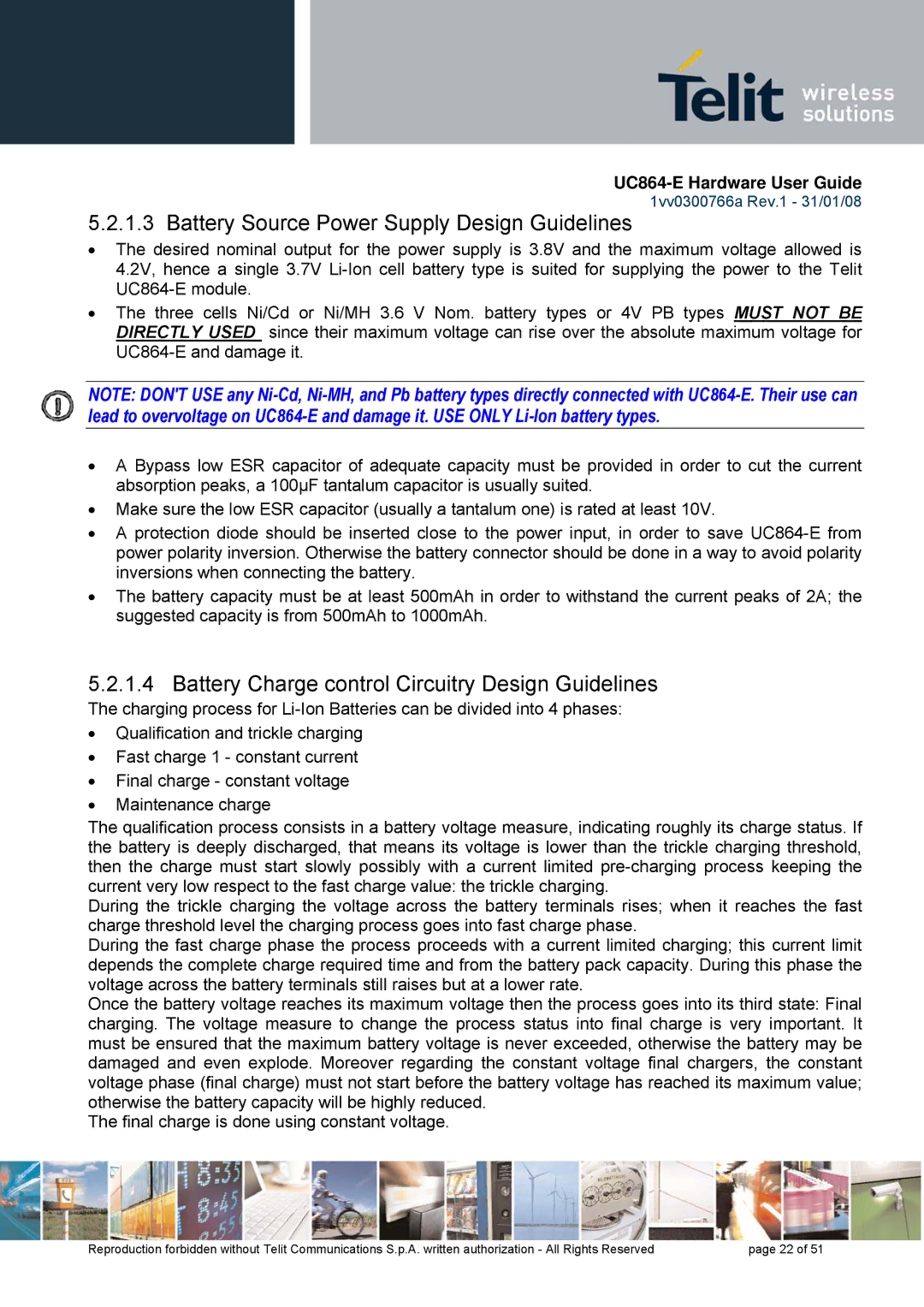
UC864-E Hardware User Guide
1vv0300766a Rev.1 - 31/01/08
5.2.1.3 Battery Source Power Supply Design Guidelines
•The desired nominal output for the power supply is 3.8V and the maximum voltage allowed is 4.2V, hence a single 3.7V
•The three cells Ni/Cd or Ni/MH 3.6 V Nom. battery types or 4V PB types MUST NOT BE DIRECTLY USED since their maximum voltage can rise over the absolute maximum voltage for
NOTE: DON'T USE any
•A Bypass low ESR capacitor of adequate capacity must be provided in order to cut the current absorption peaks, a 100μF tantalum capacitor is usually suited.
•Make sure the low ESR capacitor (usually a tantalum one) is rated at least 10V.
•A protection diode should be inserted close to the power input, in order to save
•The battery capacity must be at least 500mAh in order to withstand the current peaks of 2A; the suggested capacity is from 500mAh to 1000mAh.
5.2.1.4 Battery Charge control Circuitry Design Guidelines
The charging process for
•Qualification and trickle charging
•Fast charge 1 - constant current
•Final charge - constant voltage
•Maintenance charge
The qualification process consists in a battery voltage measure, indicating roughly its charge status. If the battery is deeply discharged, that means its voltage is lower than the trickle charging threshold, then the charge must start slowly possibly with a current limited
During the trickle charging the voltage across the battery terminals rises; when it reaches the fast charge threshold level the charging process goes into fast charge phase.
During the fast charge phase the process proceeds with a current limited charging; this current limit depends the complete charge required time and from the battery pack capacity. During this phase the voltage across the battery terminals still raises but at a lower rate.
Once the battery voltage reaches its maximum voltage then the process goes into its third state: Final charging. The voltage measure to change the process status into final charge is very important. It must be ensured that the maximum battery voltage is never exceeded, otherwise the battery may be damaged and even explode. Moreover regarding the constant voltage final chargers, the constant voltage phase (final charge) must not start before the battery voltage has reached its maximum value; otherwise the battery capacity will be highly reduced.
The final charge is done using constant voltage.
Reproduction forbidden without Telit Communications S.p.A. written authorization - All Rights Reserved | page 22 of 51 |
